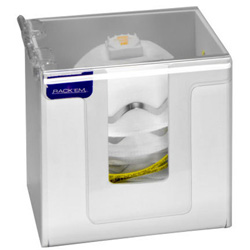| The Home page of ILPI's Safety Data Sheet (SDS) Resource, the leader in SDS information since 1995! | |
| The history and philosophy behind this resource. | |
| A curated collection of books and reference materials concerning Safety Data Sheets and closely related topics. | |
| Paste your plain text SDS into the SDS-Demystifier, and it will be converted into a hypertext-enriched document with links to detailed explanations of each key term. | |
| An extensive list of frequently asked questions about Safety Data Sheets including regulations, content, compliance, and more. | |
| A humorous take on Safety Data Sheet jargon. Fill in the blanks on our entry form to generate a personalized Unsafety Data Sheet to share with your coworkers. | |
| Since 1995, we've maintained this massive curated list of the best places to find Safety Data Sheets on the Internet. | |
| Way more than a glossary, this hypertext-enhanced resource covers hundreds of SDS-related terms and expert knowledge. Each entry includes both the SDS relevance and links to additional authoritative resources. | |
| Archived results of Safety Data Sheet related polls taken by some of our millions of site visitors | |
| You are here! The OSHA regulations behind SDS regulations, including the inspection guidelines and over 400 official interpretations letters under the Hazard Communication Standard | |
| Commercial suppliers of SDS authoring and management software as well as cloud compliance services. | |
| Commercial companies that will create SDS's for your specific needs as well as SDS translation companies. |

Safety signs, banners, and scoreboards? Get yours at Safety Emporium!
| Title: 05/29/1997 - A hazardous chemical is any chemical which is a physical hazard or a health standard. | |
| Record Type: Interpretation | Standard Number: 1910.132; 1910.1200 |
OSHA requirements are set by statute, standards and regulations. Our interpretation letters explain these requirements and how they apply to particular circumstances, but they cannot create additional employer obligations. This letter constitutes OSHA's interpretation of the requirements discussed. Note that our enforcement guidance may be affected by changes to OSHA rules. Also, from time to time we update our guidance in response to new information. To keep apprised of such developments, you can consult OSHA's website at https://www.osha.gov
May 29, 1997
Mr. Chris Moore, President
Association of Civilian Technicians
Lone Star Chapter 100
1309 Lamar Street
Tyler, Texas 75701
Dear Mr. Moore:
This letter is in response to your recent telephone inquiry concerning a MEMORANDUM FOR SEE DISTRIBUTION dated 20 December, 1996, that was sent to us for comment. Col. Barkley's statement about the Occupational Safety and Health Administration (OSHA) definition of a hazardous chemical is incorrect. In 29 CFR 1910.1200, OSHA simply states a hazardous chemical is any chemical which is a physical hazard or a health hazard. Antifreeze, oil and diesel are at the minimum irritants and, as such, would all fall under the category of "hazardous chemical." The material safety data sheets (MSDSs) for these chemicals should provide you with the health hazards information and the precautions to take if exposed to the chemical.
Cotton uniforms should not be regarded as personal protective equipment (PPE) in this case. If chemical splashes are expected, then impermeable clothing should be worn. Uniforms in the vehicle maintenance setting are provided to employees to prevent their own clothes from becoming torn or dirty. If there is a potential for asbestos exposure, then the employer is responsible for providing and washing of the personal protective clothing or providing disposable coveralls.
Col. Barkley's memo essentially follows 29 CFR 1910.132 in its approach to determine if additional personal protective equipment is needed and if uniforms are being improperly regarded as PPE. Supervisors must assess the workplace for hazards, select and provide the proper protective equipment, communicate selection decisions to the employees, ensure employees follow correct procedures, and ensure employees wear the proper equipment.
We hope this answers your questions. If you need further assistance, please feel free to contact Craig Moulton of the Office of Health Compliance Assistance at (202) 219-7380.
Sincerely,
Stephen Mallinger, Acting Director
Office of Health Compliance Assistance
December 20, 1996
MEMORANDUM FOR SEE DISTRIBUTION
SUBJECT: Contaminated Uniforms
- There appears to be some confusion in what constitutes a contaminated uniform. Supervisors will ensure protective equipment/clothing and correct procedures are used for all processes involving hazardous substances. Reports reaching this office indicate that diesel, oil, and other petroleum based products are contaminating uniforms. This is a safety and procedural problem that requires supervisor involvement in the process. Antifreeze, oil products and diesel are not hazardous materials and do not meet the OSHA definition.
- Supervisors with maintenance work areas that use hazardous chemicals must review procedures with their employees. Personnel that work Allied Trades practices have more exposure to these materials. All supervisors will review, for example all processes that may contaminate coveralls/uniforms; i.e., brake asbestos particles or battery acids.
- Supervisors must ensure employees are trained and required to wear the correct equipment use the right tools and follow correct procedures. Paper coveralls are available, and can be ordered as required. (See Enclosure 1) At this time, Management will not launder uniforms, at this time, until substantiated proof exists for the requirement.
- Upon receipt of this memorandum, first-level supervisors will report in writing to this office any/all contamination of uniforms and clothing within 3 working days of the occurrence. (See Enclosure 2) This report will include a statement from the first level supervisor as to time and date the supervisor last briefed the employee on safety consideration for the process in question and a description of how this occurrence happened.
- Point of contact is COL Peters at commercial: (512) 465-5194, DSN: 954-5194.
The original official public domain version of this document is available from OSHA at https://www.osha.gov/laws-regs/standardinterpretations/1997-05-29-1.

